Which parameter is used to associate a received route with a local VPN route table?
You are asked to automatically provision new Juniper Networks devices in your network with minimal manual intervention Before you begin, which two statements are correct? (Choose two.)
Exhibit.
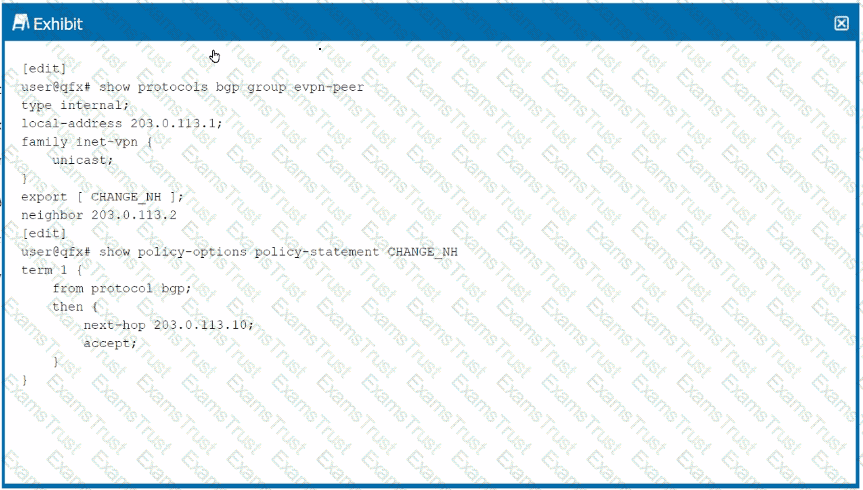
Given the configuration shown in the exhibit, why has the next hop remained the same for the EVPN routes advertised to the peer 203.0.113.2?
A local VTEP has two ECMP paths to a remote VTEP
Which two statements are correct when load balancing is enabled in this scenario? (Choose two.)
Exhibit.
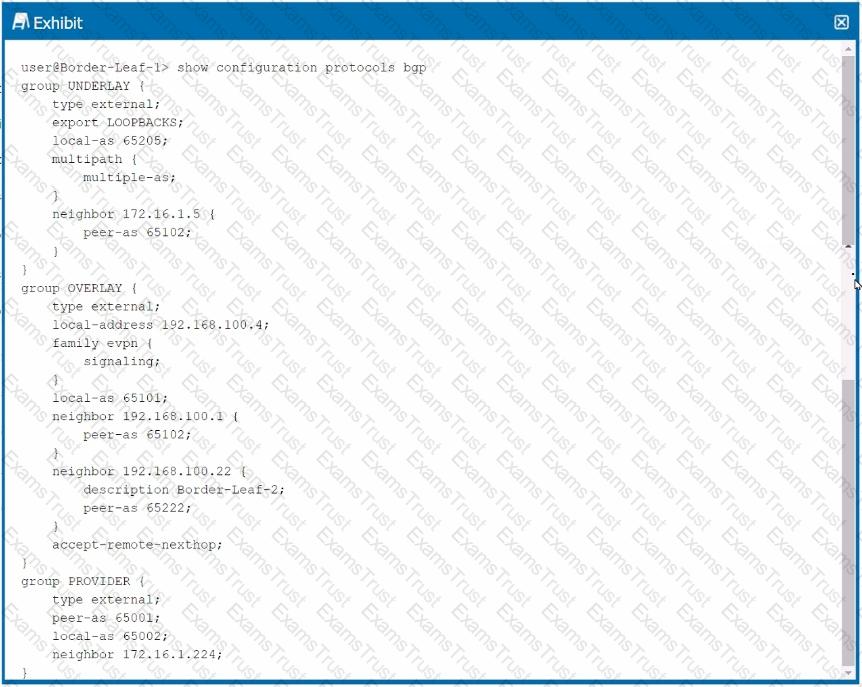
You are troubleshooting a DCI connection to another data center The BGP session to the provider is established, but the session to Border-Leaf-2 is not established. Referring to the exhibit, which configuration change should be made to solve the problem?
Why is a designated forwarder required in a multihomed CE-to-PE VXLAN environment using EVPN signalling?
You are asked to build redundant gateways in your EVPN-VXLAN environment, but you must conserve address space because these gateways must span across seven PES. What should you implement on the PEs lo satisfy these requirements?
Exhibit.
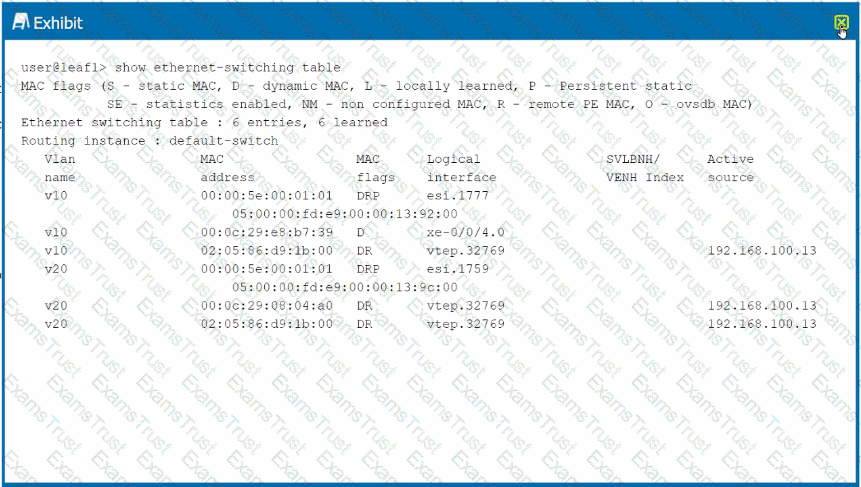
Referring to the exhibit, why is the active source field blank for the entry that uses the 00:0c:29:e8:b7:39 MAC address?
Click the Exhibit button.
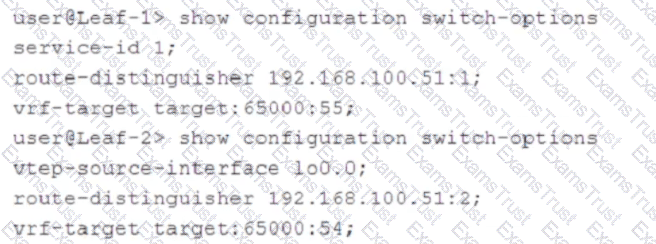
Connections between hosts connected to Leaf-1 and Leaf-2 are not working correctly.
Referring to the exhibit, which two configuration changes are required to solve the problem? (Choose two.)
Exhibit.
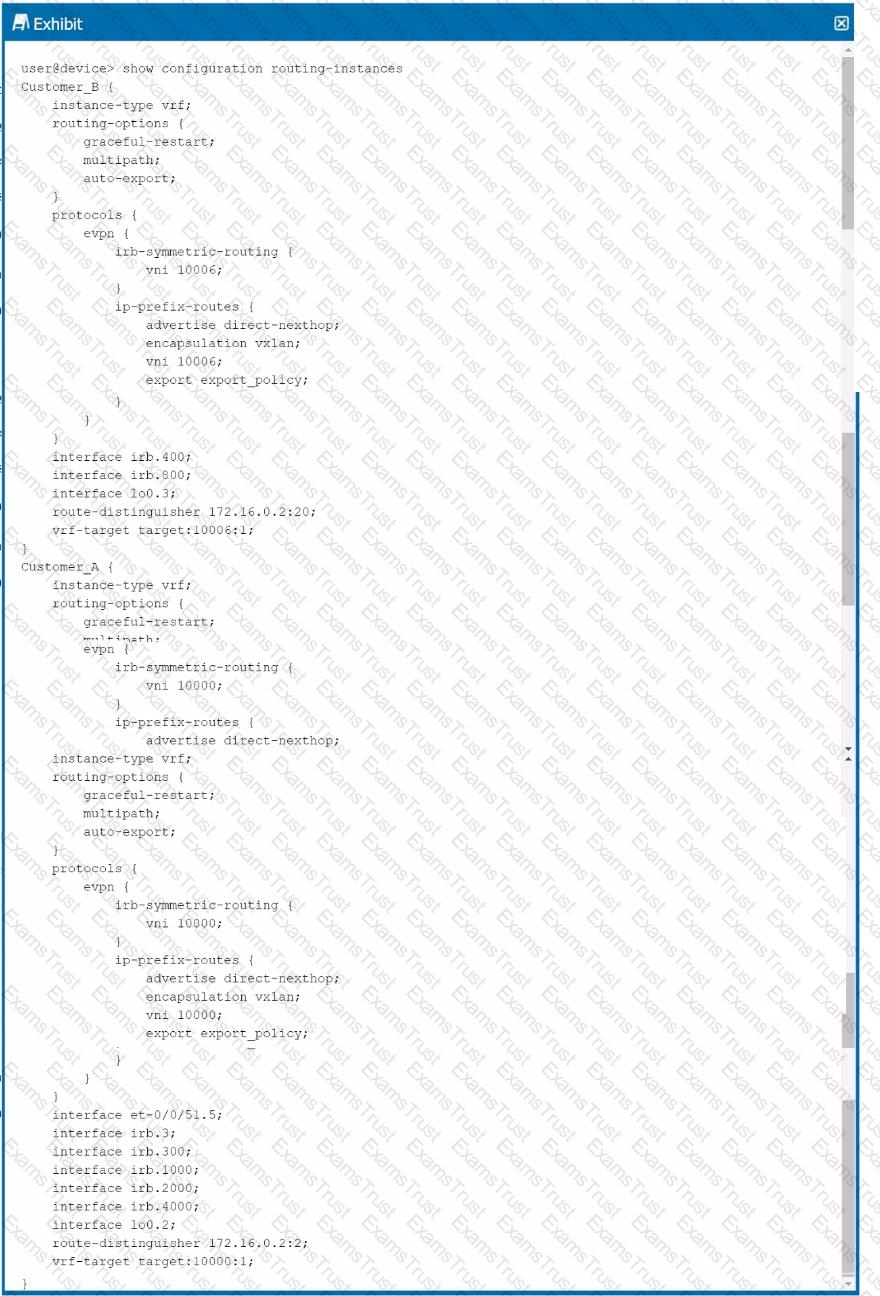
Referring to the configuration shown in the exhibit, assume that there is no external router present, and that the configuration is fabric-only.
Which two statements are true about the example configuration? (Choose two.)
Which two statements are correct about an IP fabric? (Choose two.)
Which two statements are true about IP fabrics using unnumbered BGP? (Choose two.)
Exhibit.
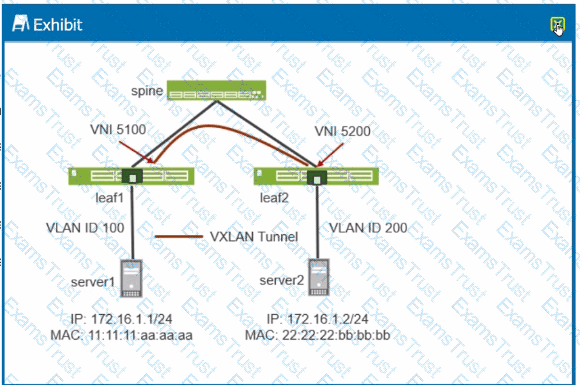
A VXLAN tunnel has been created between leaf1 and Ieaf2 in your data center. Referring to the exhibit, which statement is correct?
You are asked to implement VXLAN group-based policies (GBPs) in your data center. Which two statements are correct in (his scenario? (Choose two.)
Your organization is implementing EVPN-VXLAN and requires multiple overlapping VLAN-IDs. You decide to use a routing-instance type mac-vrf to satisfy this request.
Which two statements are correct in this scenario? (Choose two.)
You are selling up an EVPN-VXLAN architecture (or your new data center. this initial deployment will be less than 50 switches: however, it could scale up to 250 switches over time supporting 1024 VLANs. You are still deciding whether to use symmetric or asymmetric routing.
In this scenario, which two statements are correct? (Choose two.)
You manage an IP fabric with an EVPN-VXLAN overlay. You have multiple tenants separated using multiple unique VRF instances. You want to determine the routing information that belongs in each routing instance's routing table.
In this scenario, which property is used for this purpose?
Exhibit.
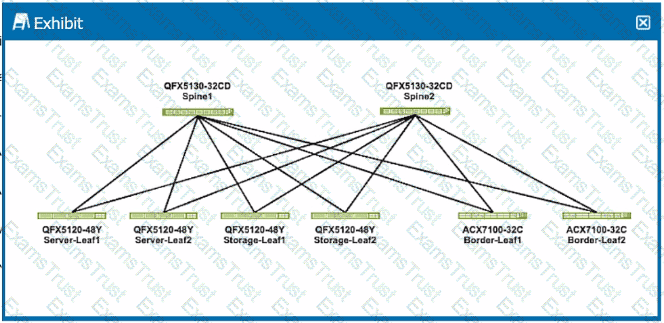
You are deploying a VXLAN overlay with EVPN as the control plane in an ERB architecture.
Referring to the exhibit, which three statements are correct about where the VXLAN gateways will be placed? (Choose three.)
Which three statements are correct about symmetric IRB routing with EVPN Type 2 routes? (Choose three.)